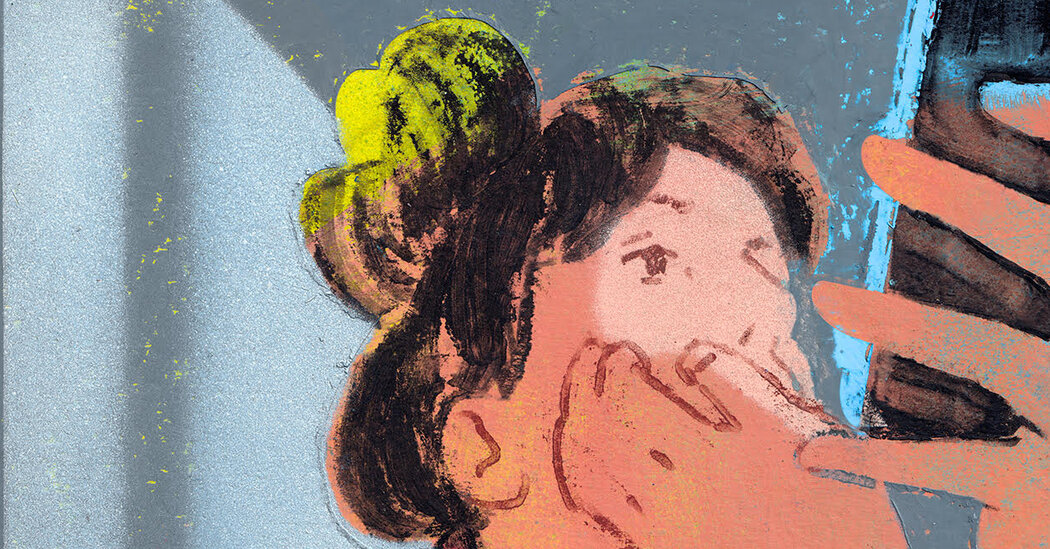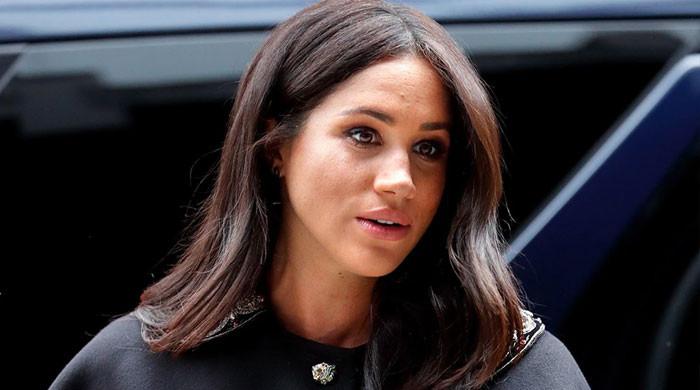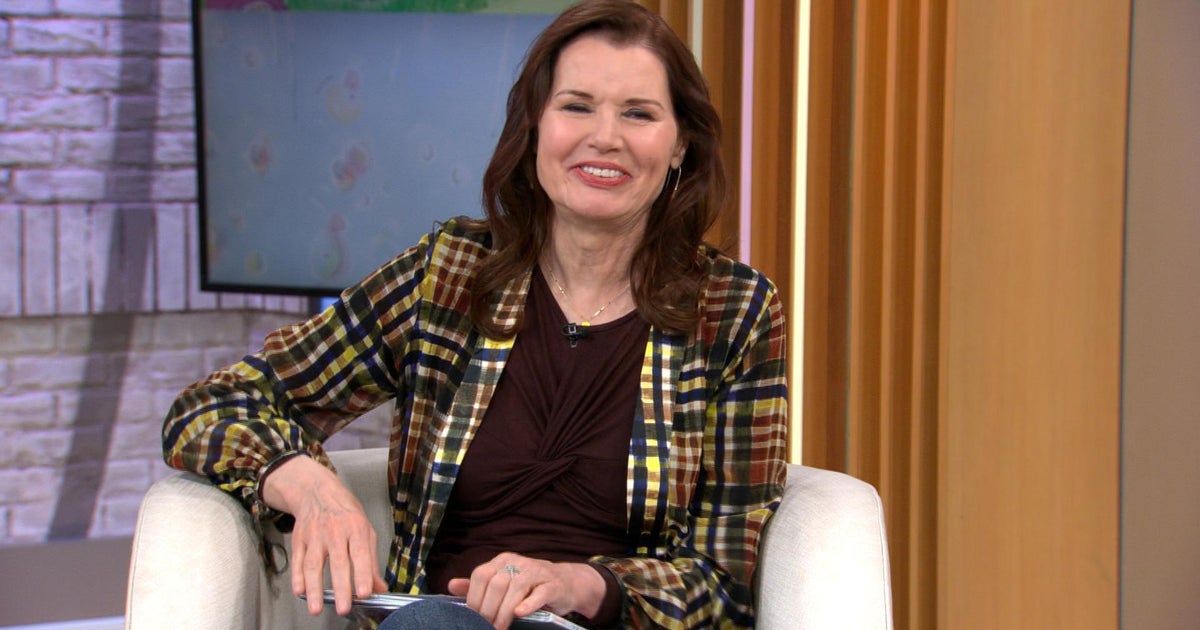Recently Instagram led me to the account of a very thin social media influencer. I would not usually begin an article with a description of the subject’s body, but in this case it’s also her personal brand. She often appears in luxury apartments or hotels, modeling club wear while filming skits about how heterosexual men and women ought to relate to one another — pretty standard fare for an Instagram model in 2025.
The twist? She identifies as disadvantaged, a survivor of adolescent bullying over her slender frame who has become a champion of “body positivity” for the ultrathin. In one video, she lists her height and weight in the corner of the image as she films herself stretching in athleisure; in another, she works to “boost the confidence of girls with a slim body type” by celebrating her own “small waist,” sharp jaw and prominent collarbone.
As I scrolled, mesmerized, through her account, I watched her knit together two seemingly irreconcilable cultural forces. She performs a narrow beauty ideal for women and cloaks it in the language of inclusivity. Her feed is a clever combination of methods for capturing online attention: look like a model, talk like an activist, behave like a troll. And it represents a new balancing act for women in the public eye, and those who are watching them.
An influencer may now mold her body to a punishing standard while denying that any standard exists, or even that there is anything punishing about it. The woman herself appears to resolve all of these contradictions under the banner of self-love. It’s cognitive dissonance as a content strategy, and it’s everywhere.
I see it in Clara Dao, the influencer who amassed 2.9 million followers on TikTok by encouraging flat-chested women to embrace their look — then revealed a set of breast implants and started a new brand around her unwavering acceptance of her new body. I see it replicated across social media, where slender models post unfiltered, unposed, #relatable shots that reveal some absurdly minor imperfection, like a single stomach fold or a barely perceptible pooch.
I saw it on “The Secret Lives of Mormon Wives” last season, when a woman celebrated her upcoming vaginoplasty procedure by gathering her girlfriends to paint their ideal vulvas, a bizarre perversion of a feminist consciousness-raising exercise meant to banish shame. I even caught a glint of it during the “Wicked” press tour, when fans expressed concern over the apparent weight loss of the film’s stars, prompting one of them, Ariana Grande, to caution that talking about other people’s bodies is “dangerous to all involved.”
In 2025, an early-2000s body ideal has returned, filtered through a mid-2010s body-positivity discourse. In the aughts, a newly invigorated tabloid culture made ultrathin stars like Paris Hilton and Amy Winehouse ultra-famous, shots of spiky hips and clavicles punctuating the morbid fascination of early celebrity blogs.
In the following decade, as millions of young women started documenting themselves on social media — and grappling, hour by hour, with their self-presentation — “body positivity” became a buzzy term on Instagram and the size of Sports Illustrated swimsuit models and Barbie dolls expanded to reflect a more inclusive range.
Now a stricter standard is reasserting itself. Last fall, the American Society of Plastic Surgeons announced the “ballet body” as the new aesthetic ideal, while Vogue Business released a “size inclusivity” report showing “the pendulum has swung back to the glamorization of thinness.”
On the fashion runways that presage coming trends in more than just clothes, models’ bodies are shrinking once again. Conservative women’s magazines, like The Conservateur and Evie, are championing the return of what they call an “objective” and “conventional” feminine ideal, which appears in their pages as a slim white woman with long hair, prominent cleavage and heavy makeup. And the rise of drugs like Ozempic — which has helped millions of people manage chronic illnesses, and also aided skinny celebrities in becoming even skinnier — has formalized the relationship among thinness, status and wealth.
The language of body positivity has not gone away. But it’s been flattened and co-opted. The body-positivity movement urges us to embrace all bodies regardless of shape and size, but it doesn’t stop there. It condemns the social structures that imbue some bodies with power and desirability while stigmatizing others.
When the Instagram skinny influencer applies the hashtags #skinnygirl and #bodypositive to the same image, she seeks an audience for her high-status appearance while gesturing at an inclusive movement. Then she captions it with a message that anticipates and neutralizes critiques by claiming that she has finally achieved #selflove after a childhood of being “skinny-shamed.” The message is that any cultural trend toward prizing female emaciation ought to be embraced under the banner of empowering slender women; it is the criticism, or even noticing, of the trend that must be suppressed.
An ideal is a moving target; the exact dimensions of the unattainable body differ from culture to culture and fluctuate from year to year. Kim Kardashian made her “internet-breaking” body her brand by hopping between racially appropriative styles and cycling relentlessly between anime-character curves and a twiggy frame. When the size of a woman’s body becomes a fashion trend, it suggests that she is always available to be reshaped and remolded to suit public tastes. Women in the public eye stand to be scrutinized for every pound they gain or lose. Even the fascination with celebrities who are “too thin” is a piece of a culture where women’s bodies are considered public property. The language of “self-love” seems to individualize all of these cultural pressures, to recast them as the woman’s own autonomous desire for her self-presentation.
In her new book, “Girl on Girl: How Pop Culture Turned a Generation of Women Against Themselves,” the journalist Sophie Gilbert examines the thin ideal promoted at the dawn of the century, and the new form in which it has returned. “I think certainly we don’t have the same fatphobia now that we had back then. No one’s going to publish a book called ‘Skinny Bitch’ where they lambaste the reader for being a disgusting fat pig,” Gilbert recently told Emily Gould at The Cut. “But it’s different. I think what’s happening now is sneakier.”
Does the body-positive influencer who creates content around her high-status body know what she’s doing? There is a dose of trolling to these performances. The editor of The Conservateur recently said that in reinscribing an “objectively beautiful” standard for women’s looks, she was giving “unrecognized women in the culture their due.”
The competing performances of superiority and disadvantage, of self-love and self-optimization, make for a confounding spectacle, and it’s clear that such contradictions drive engagement. The comments sections on their accounts host endless cycles of disillusionment, rage, debate and affirmation. But there’s a sincerity to these influencers, too — an enduring belief that a woman may just be able to have it all. Position herself just-so, and she can achieve self-acceptance and social approval at once.
Earlier this month, in a video Clara Dao posted explaining her decision to undergo breast augmentation surgery, she said she was pivoting her content to suit her changed body. She sat at the edge of her bed and spoke over a searching piano track. “I know this might come as a shock, because my whole page used to be about loving my flat chest and being confident with it,” she said. “I literally built my entire career around that. Was everything a lie? Was I secretly insecure this whole time, and just using body positivity to make money so I could finally afford a boob job? No.”
Dao got the implants for “fun,” she explained. After six years and more than 900 videos of “flat-chest content,” she “got bored.” She had turned feeling good about her own body into a commodified brand, and now she was ready to trade it in for a new look.
When body-positive content rose in popularity on social media, it felt like a progressive movement. But it was also a trend like any other — one that could be embraced and then discarded when the vibe shifted. Dao’s followers are flooding her comments with anger and disappointment, but all the analytics show is that the engagement is through the roof. As she put it in a recent video caption, “I am convinced the internet is triggered whenever they see a confident woman.” She tagged the post #selflove.
#Beauty #Standards #Body #Positivity #Collide










